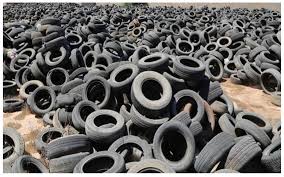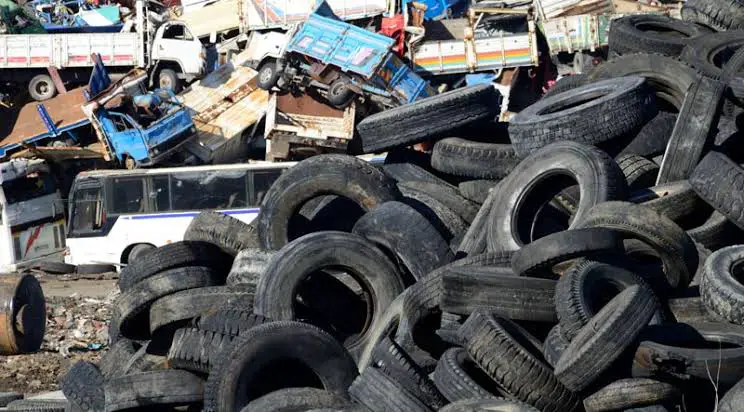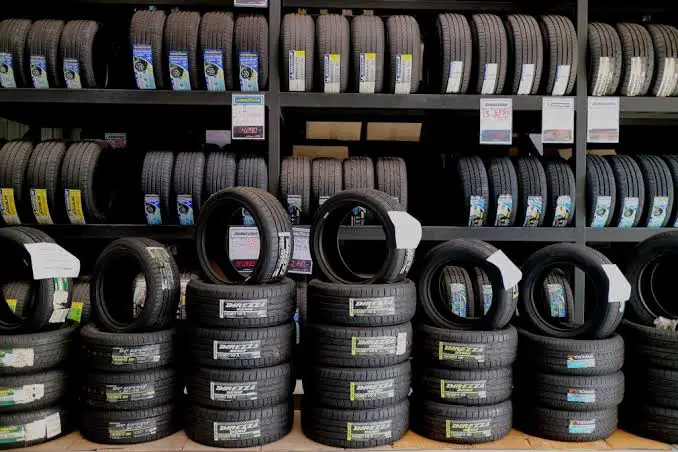The Practical Steps to Convert Tires Wastes into Crumb Rubber for Athletic Surfaces: Tires wastes, those old rubber things we don’t use anymore, can be turned into something super useful such as crumb rubber. Think of it like tiny rubber pieces, kind of like crumbs from bread but made from tires. And guess what? We can use these crumb rubber bits to make athletic surfaces, like the ones you run or play sports on.
So, how does it work? Well, first, we collect all those old tires that people don’t need anymore. Instead of letting them sit around taking up space, we recycle them. Recycling means we take something old and make it into something new. Cool, right?
Once we have the old tires, we shred them into small pieces. These pieces are what we call crumb rubber. They’re kind of like little rubber pellets. But don’t worry, they’re not for eating!
Now comes the fun part. We take these crumb rubber bits and mix them with other materials, like glue or asphalt. This mixture is then spread out over surfaces like playgrounds or sports fields. When it dries, it forms a bouncy, soft layer that’s perfect for running and playing on.
But why use crumb rubber instead of something else? Well, crumb rubber is great because it’s squishy and springy. That means when you run or jump on it, it gives a little bit, which can help prevent injuries. Plus, it’s made from recycled materials, so it’s good for the environment too.
Athletic surfaces made from crumb rubber can be found in lots of places. Maybe you’ve seen them at your school or local park. They come in all sorts of colors and designs, so they can look really cool too.
So next time you see an athletic surface made from crumb rubber, remember that it started as old tires that were just sitting around. Thanks to recycling, they’ve been given a new life and are now helping people stay active and safe while having fun.
Read Also: Practical Steps to Convert Steel Cans Wastes into New Steel Products
Types of Recyclable Tires Wastes and their Uses

Tire wastes come in different types, and each type can be recycled into something useful. Here are some of the recyclable tire wastes and how they can be used:
1. Whole Tires: These are tires that are still intact and haven’t been used yet. They can be recycled by shredding them into smaller pieces and then processed into crumb rubber. This crumb rubber can be used for athletic surfaces, playgrounds, and even as a component in asphalt for roads.
2. Tire Shreds: Sometimes tires get damaged or worn out, and they need to be replaced. These old tires can be shredded into smaller pieces called tire shreds. Tire shreds can be used as a drainage material in construction projects, as a mulch for landscaping, or even as fuel for industrial processes.
3. Tire Chips: Tire chips are larger pieces of shredded tires. They can be used for different purposes, such as filling in landfills to create more space or as a cushioning material in playgrounds and equestrian arenas.
4. Tire Crumbs: Tire crumbs are tiny rubber particles made by further grinding down tire shreds or chips. These crumbs are commonly used as infill for artificial turf fields, as they provide cushioning and support for athletes while also improving the field’s drainage.
5. Steel Wire: Many tires contain steel wires inside them for reinforcement. These wires can be removed during the recycling process and reused in various industries, such as construction and manufacturing.
By recycling these different types of tire wastes, we can reduce waste in landfills, conserve natural resources, and create new products that benefit society and the environment.
How to Convert Tires Wastes into Crumb Rubber for Athletic Surfaces

Converting tire wastes into crumb rubber for athletic surfaces is a multi-step process. Here’s a simple explanation of how it’s done:
1. Collection: First, old tires are collected from various sources like tire shops, landfills, or recycling centers. These tires are then transported to recycling facilities.
2. Shredding: At the recycling facility, the tires are shredded into smaller pieces using special machines called shredders. This process breaks the tires down into chunks, strips, or chips.
3. Granulation: The shredded tire pieces are further processed to reduce their size into smaller granules. This is usually done using granulators or grinders, which break down the tire material into even smaller particles.
4. Magnetic Separation: Since tires contain steel wires for reinforcement, a magnetic separation process is used to remove these steel wires from the rubber granules. Magnets attract the steel wires, allowing them to be easily separated from the rubber.
5. Fine Grinding: After removing the steel wires, the rubber granules undergo a fine grinding process to create crumb rubber. This process ensures that the rubber particles are of uniform size and texture.
6. Cleaning and Drying: The crumb rubber is then thoroughly cleaned to remove any impurities or contaminants. It may also be dried to eliminate moisture, ensuring the quality and longevity of the final product.
7. Mixing and Binding: Finally, the clean and dry crumb rubber is mixed with binding agents such as polyurethane or latex. This mixture is then applied to athletic surfaces like tracks or fields, where it is spread evenly and allowed to cure.
By following these steps, old tires can be transformed into crumb rubber, which provides a safe and durable surface for athletes to train and compete on. Plus, recycling tires in this way helps reduce waste and benefits the environment.
The Benefits of Converting Tires Wastes into Crumb Rubber for Athletic Surfaces
Converting tires wastes into crumb rubber for athletic surfaces offers several benefits:
1. Safety: Crumb rubber provides a cushioned and shock-absorbent surface that helps reduce the risk of injuries during athletic activities. Its soft texture minimizes impact and strain on joints, muscles, and bones, making it safer for athletes to train and compete.
2. Durability: Crumb rubber surfaces are highly durable and resistant to wear and tear. They can withstand heavy foot traffic, harsh weather conditions, and frequent use without deteriorating or losing their quality. This durability ensures long-lasting athletic facilities that require minimal maintenance over time.
3. Versatility: Crumb rubber can be used to create a variety of athletic surfaces, including tracks, fields, courts, and playgrounds. Its versatility allows for the customization of surfaces to meet the specific needs and preferences of athletes and sports organizations.
4. Performance: Athletic surfaces made from crumb rubber offer excellent performance characteristics, such as traction, grip, and ball bounce. These surfaces enhance athletic performance by providing a consistent and reliable playing field that allows athletes to perform at their best.
5. Environmental Benefits: Recycling tires into crumb rubber helps reduce the amount of waste sent to landfills and promotes environmental sustainability. By repurposing old tires, we conserve natural resources, reduce carbon emissions associated with tire production, and minimize the environmental impact of tire disposal.
6. Cost-Effectiveness: While the initial investment in crumb rubber athletic surfaces may be higher than traditional materials, such as asphalt or concrete, they offer long-term cost savings. Crumb rubber surfaces require less maintenance and repair, resulting in lower upkeep costs over their lifespan.
7. Community Engagement: The conversion of tires wastes into crumb rubber for athletic surfaces promotes community engagement and awareness of recycling and sustainability initiatives. By supporting environmentally friendly practices, communities can come together to create healthier and more vibrant spaces for recreation and sports.
Overall, converting tires wastes into crumb rubber for athletic surfaces is a win-win solution that benefits athletes, communities, and the environment alike.
Read Also: Practical Steps to Convert Steel Cans Wastes into Construction Materials
The Uses and Benefits of Recycled Crumb Rubber for Athletic Surfaces

Recycled crumb rubber offers a multitude of uses and benefits for athletic surfaces, contributing to safer and more sustainable sports environments. Here’s a breakdown of its uses and advantages:
Uses:
1. Artificial Turf Infill: Recycled crumb rubber serves as an infill material for artificial turf systems used in various sports fields such as soccer, football, and baseball. It provides cushioning and support for athletes while enhancing the playing experience.
2. Track Surfaces: Crumb rubber is utilized in the construction of track surfaces, including running tracks and athletic courts. Its shock-absorbing properties help reduce impact injuries and provide a consistent surface for training and competition.
3. Playground Flooring: Recycled crumb rubber is used as a safe and resilient flooring material for playgrounds, offering protection against falls and impact injuries. It creates a soft and comfortable surface for children to play on while meeting safety standards.
4. Multi-Purpose Courts: Crumb rubber can be incorporated into multi-purpose courts for sports such as basketball, volleyball, and tennis. Its versatility allows for the creation of high-performance surfaces that accommodate different activities and sports.
Benefits:
1. Impact Absorption: Recycled crumb rubber provides excellent shock absorption, reducing the risk of injuries from falls and collisions. It helps cushion impact forces, protecting athletes from strains, sprains, and other related injuries.
2. Durability: Athletic surfaces made with recycled crumb rubber are highly durable and resistant to wear and tear. They maintain their quality and performance over time, even with heavy use and exposure to environmental factors.
3. Consistency: Crumb rubber surfaces offer consistent performance characteristics, such as traction, bounce, and ball roll. Athletes can rely on these surfaces for predictable and reliable play, enhancing their training and competitive experience.
4. Weather Resistance: Recycled crumb rubber is weather-resistant and can withstand extreme temperatures, UV exposure, and moisture. It remains stable and functional in various climate conditions, ensuring year-round usability of athletic facilities.
5. Sustainability: By recycling tires into crumb rubber, we reduce waste sent to landfills and promote environmental sustainability. It conserves natural resources, reduces carbon emissions, and supports eco-friendly practices in sports infrastructure development.
6. Low Maintenance: Crumb rubber athletic surfaces require minimal maintenance compared to traditional materials. They are easy to clean, resistant to staining and fading, and typically have a longer lifespan, resulting in cost savings over time.
7. Community Health: The use of recycled crumb rubber contributes to community health and well-being by providing safe and accessible spaces for physical activity and recreation. It encourages active lifestyles and fosters a sense of community engagement and pride.
Recycled crumb rubber offers versatile applications and significant benefits for athletic surfaces, enhancing safety, performance, and sustainability in sports environments.
The Challenges of Converting Tires Wastes into Crumb Rubber for Athletic Surfaces and their Solutions
While converting tires wastes into crumb rubber for athletic surfaces offers numerous benefits, there are also several challenges associated with the process. Here are some of the challenges and potential solutions:
1. Collection and Transportation:
Challenge: Collecting and transporting large quantities of tires wastes from various sources to recycling facilities can be logistically challenging and costly.
Solution: Implementing efficient tire collection programs, incentivizing tire recycling, and establishing partnerships with local businesses and municipalities can help streamline the collection and transportation process.
2. Processing Technology:
Challenge: Converting tires into crumb rubber requires specialized equipment and technology, which may not be readily available or affordable for all recycling facilities.
Solution: Investing in research and development to improve processing technology, providing financial assistance or grants to support equipment upgrades, and sharing best practices within the industry can help overcome this challenge.
3. Contaminants and Impurities:
Challenge: Tires may contain contaminants such as dirt, debris, and metal wires, which can affect the quality and safety of the crumb rubber produced.
Solution: Implementing stringent quality control measures, including thorough cleaning and inspection processes, using advanced separation techniques to remove contaminants, and ensuring compliance with regulatory standards can help mitigate this issue.
4. Environmental Concerns:
Challenge: The recycling process of tires into crumb rubber may generate environmental pollutants, such as emissions from shredding and grinding operations.
Solution: Implementing environmentally friendly practices, such as using energy-efficient machinery, installing pollution control devices, and adopting sustainable production methods, can help minimize the environmental impact of tire recycling activities.
5. Market Demand and End-Use Applications:
Challenge: Ensuring sufficient market demand for recycled crumb rubber products and identifying viable end-use applications for the material can be challenging.
Solution: Collaborating with manufacturers, contractors, and end-users to promote the benefits of crumb rubber products, conducting market research to identify emerging trends and opportunities, and diversifying product offerings to meet market demand can help stimulate demand for recycled crumb rubber.
6. Regulatory Compliance:
Challenge: Meeting regulatory requirements and standards for the production and use of recycled crumb rubber products can be complex and time-consuming.
Solution: Staying informed about relevant regulations and guidelines, conducting regular audits and inspections to ensure compliance, and engaging with regulatory agencies and stakeholders to advocate for supportive policies can help navigate the regulatory landscape effectively.
Frequently Asked Questions (FAQs) About How to Convert was Tires Wastes into Crumb Rubber for Athletic Surfaces
1. Q: What is crumb rubber?
A: Crumb rubber is a material produced by grinding up old tires into small, uniform particles. It is commonly used as infill for athletic surfaces to provide cushioning and support.
2. Q: How are tires wastes converted into crumb rubber for athletic surfaces?
A: The process involves shredding old tires into smaller pieces, further grinding them into fine particles, removing any contaminants like metal wires, cleaning and drying the rubber crumbs, and finally mixing them with binding agents before applying them to athletic surfaces.
3. Q: What are the benefits of using crumb rubber for athletic surfaces?
A: Crumb rubber provides safety by absorbing impact, durability against wear and tear, consistency in performance, resistance to weather conditions, and environmental sustainability through tire recycling.
4. Q: Are there any health concerns associated with recycled crumb rubber?
A: Studies have been conducted to evaluate potential health risks associated with recycled crumb rubber, particularly in artificial turf infill. While some concerns have been raised about exposure to chemicals and particles, many studies have concluded that the risk is minimal under normal use conditions.
5. Q: How long does it take to convert tires wastes into crumb rubber?
A: The time it takes to convert tires wastes into crumb rubber depends on factors such as the capacity of the recycling facility, the efficiency of the processing equipment, and the volume of tires being processed. Generally, it can take anywhere from a few hours to several days.
6. Q: Can crumb rubber be recycled again after its use on athletic surfaces?
A: Yes, crumb rubber can be recycled again after its use on athletic surfaces. It can be reprocessed and used in various applications such as asphalt pavement, construction materials, and consumer products.
7. Q: Are there any regulations or standards governing the production and use of recycled crumb rubber for athletic surfaces?
A: Yes, there are regulations and standards that govern the production and use of recycled crumb rubber for athletic surfaces. These may include specifications for material composition, safety standards, and environmental requirements.
8. Q: How can I ensure that the crumb rubber used for athletic surfaces is of high quality?
A: To ensure high-quality crumb rubber, it is essential to work with reputable suppliers and manufacturers who follow industry best practices, conduct thorough testing and quality control measures, and comply with relevant regulations and standards. Additionally, obtaining certifications such as ASTM or FIFA can provide assurance of product quality.
Read Also: Balinese Cat Breed Description and Complete Care Guide
